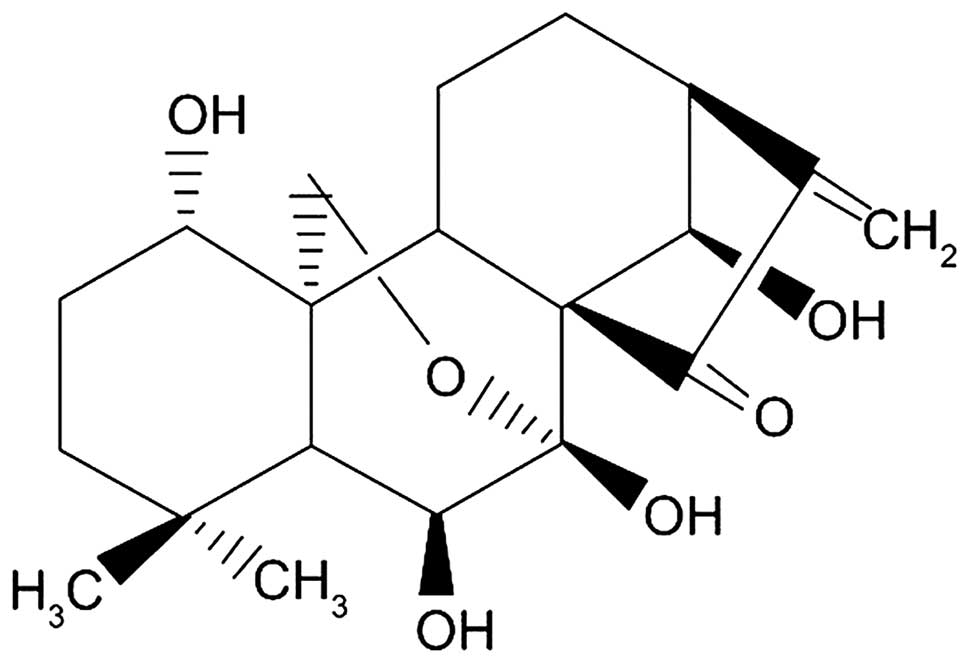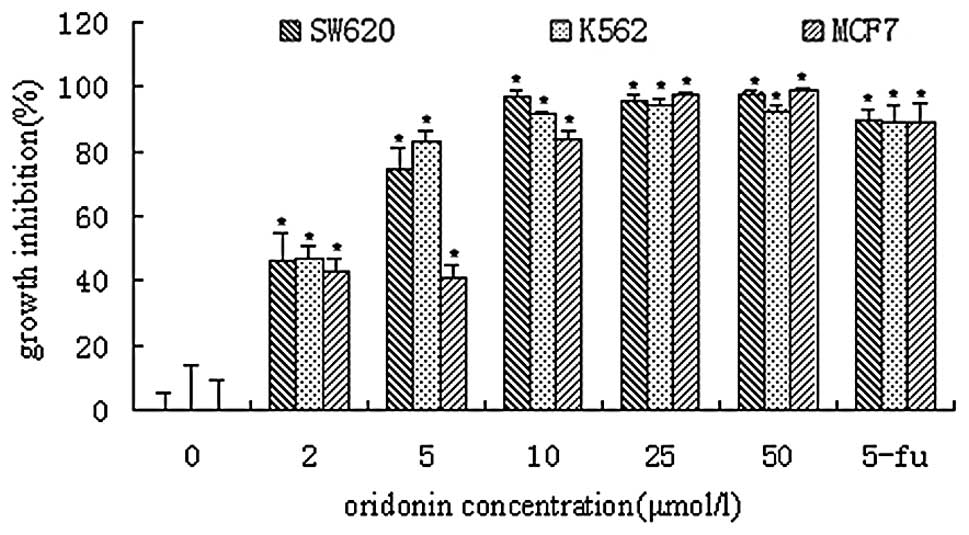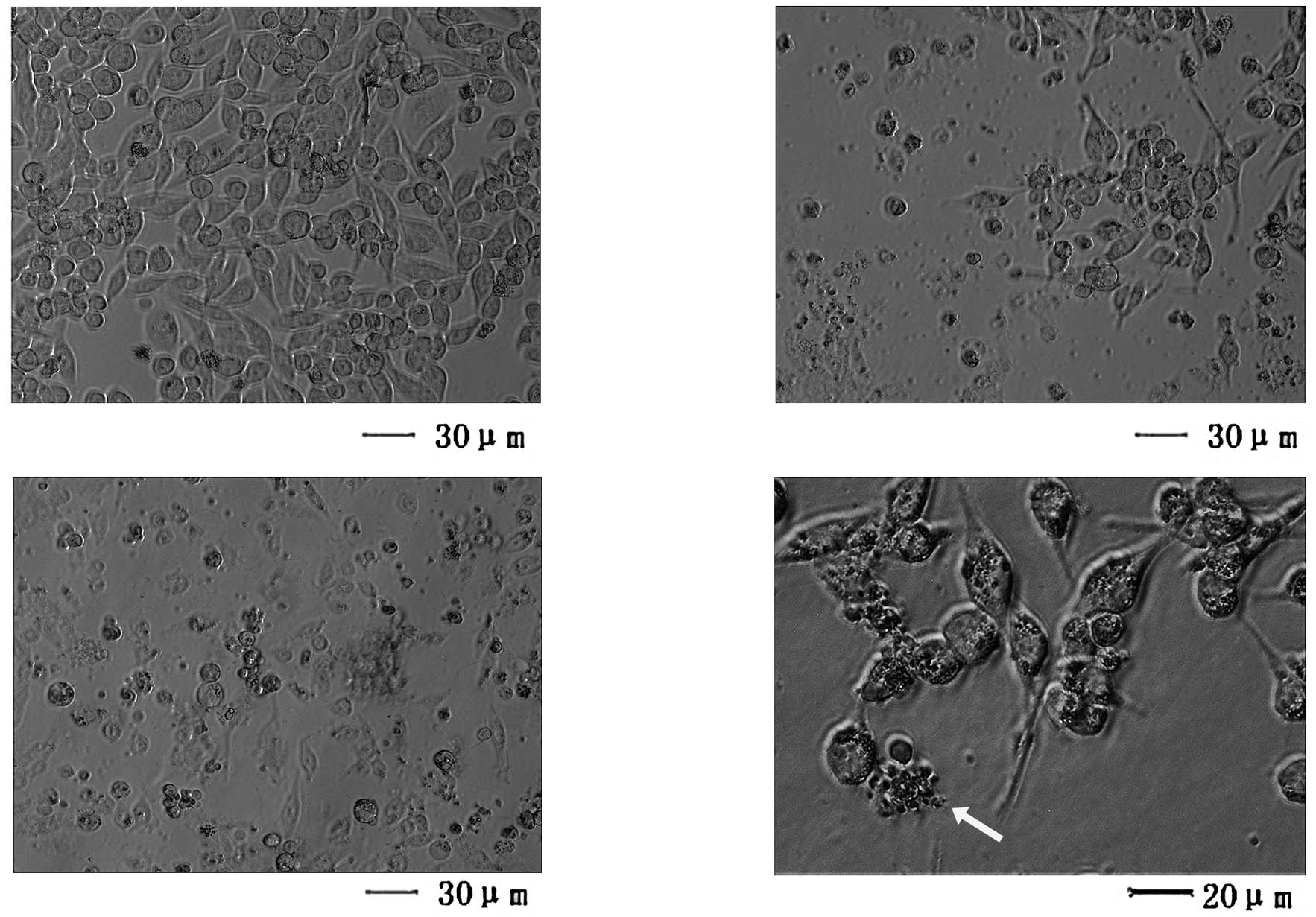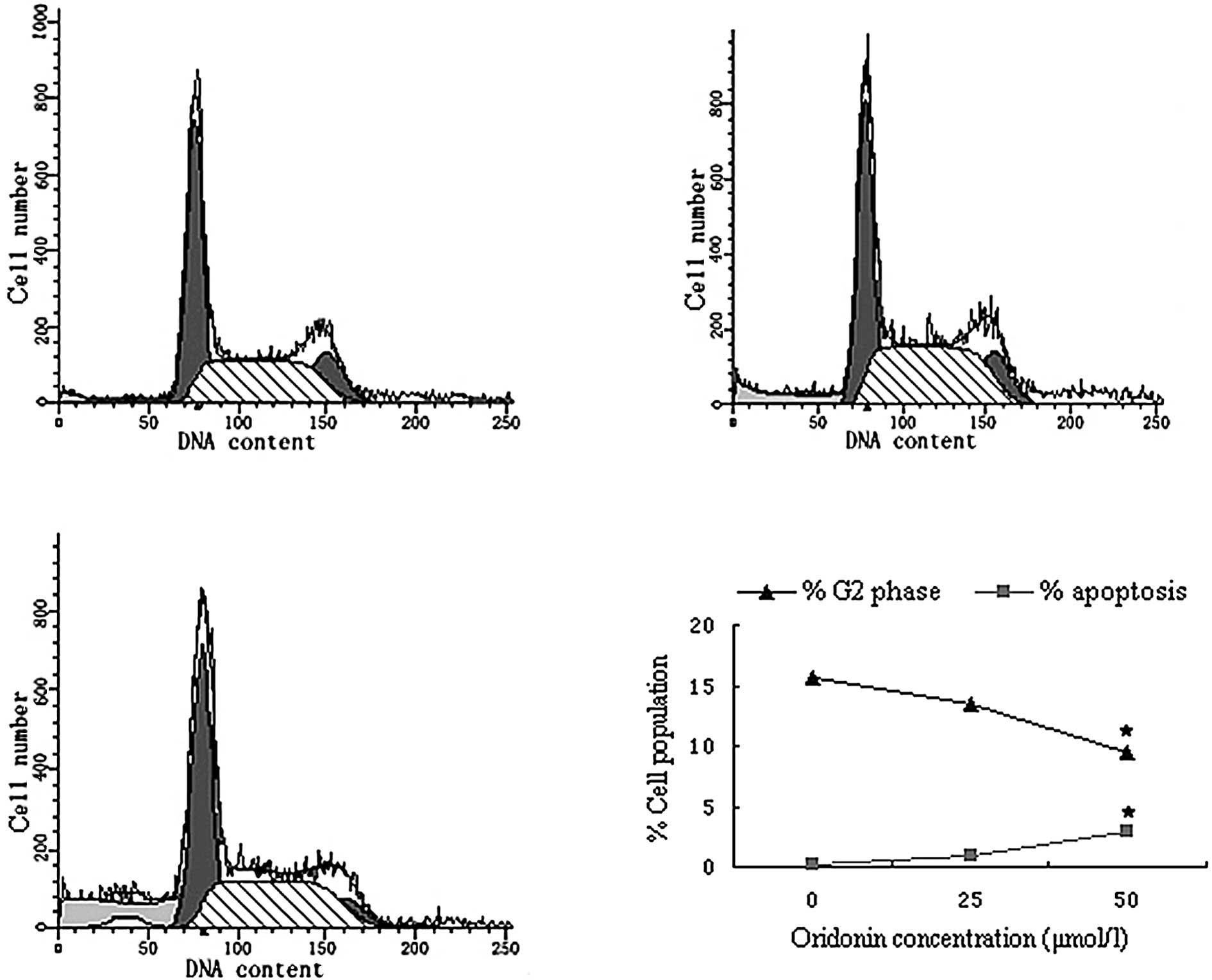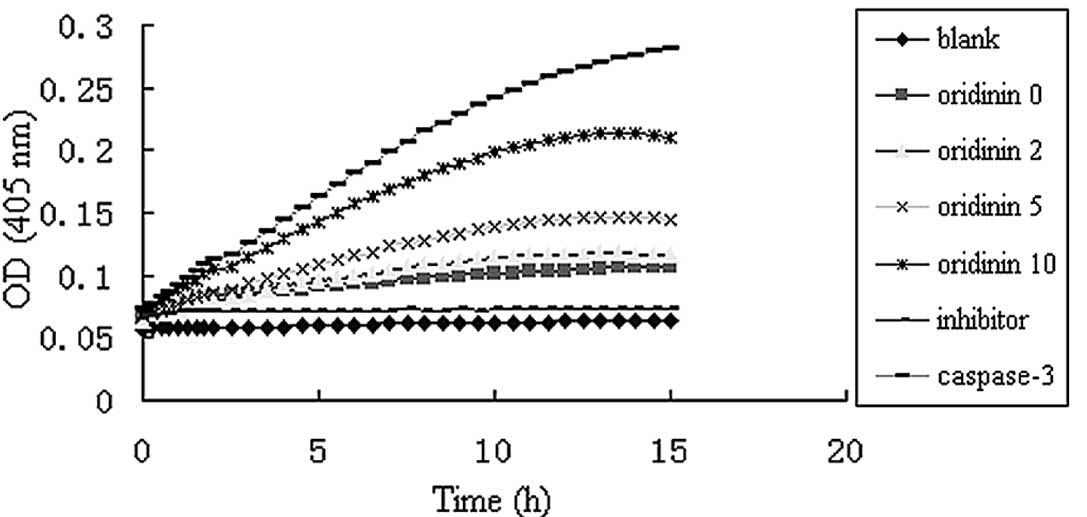|
1
|
Fuji K, Node M, Sai M, Fujita E, Takeda S
and Unemi N: Terpenoids. LIII Antitumor activity of trichorabdals
and related compounds. Chem Pharm Bull (Tokyo). 37:1472–1476. 1989.
View Article : Google Scholar : PubMed/NCBI
|
|
2
|
Osawa K, Yasuda H, Maruyama T, Morita H,
Takeya K and Itokawa H: Antibacterial trichorabdal diterpenes from
Rabdosia trichocarpa. Phytochemistry. 36:1287–1291. 1994.
View Article : Google Scholar : PubMed/NCBI
|
|
3
|
Zhang Y, Wang J, Lou LG, Zhang TM and Hou
JW: Scavenging effect of oridonin on active oxygen free radicals.
Henan Medical Research. 8:100–104. 1999.
|
|
4
|
Ikezoe T, Chen SS, Tong XJ, Heber D,
Taguchi H and Koeffler HP: Oridonin induces growth inhibition and
apoptosis of a variety of human cancer cells. Int J Oncol.
23:1187–1193. 2003.PubMed/NCBI
|
|
5
|
Liu YQ, You S, Tashiro S, Onodera S and
Ikejima T: Roles of Ras and extracellular signal-regulated
kinase-dependent IκBα degradation in oridonin-enhanced phagocytosis
of apoptotic cells by human macrophage-like U937 cells. Int
Immunopharmacol. 6:260–268. 2006.
|
|
6
|
Kosty MP: PC-SPES: hope or hype? J Clin
Oncol. 22:3657–3659. 2004. View Article : Google Scholar : PubMed/NCBI
|
|
7
|
Darzynkiewicz Z, Traganos F, Wu JM and
Chen S: Chinese herbal mixture PC SPES in treatment of prostate
cancer (Review). Int J Oncol. 17:729–736. 2000.PubMed/NCBI
|
|
8
|
de la Taille A, Hayek OR, Burchardt M,
Burchardt T and Katz AE: Role of herbal compounds (PC-SPES) in
hormone-refractory prostate cancer: two case reports. J Altern
Complement Med. 6:449–451. 2000.PubMed/NCBI
|
|
9
|
Sartippour MR, Seeram NP, Heber D, et al:
Rabdosia rubescens inhibits breast cancer growth and
angiogenesis. Int J Oncol. 26:121–127. 2005.
|
|
10
|
Fujita E, Nagao Y, Node M, Kaneko K,
Nakazawa S and Kuroda H: Antitumor activity of the Isodon
diterpenoids: structural requirements for the activity.
Experientia. 32:203–206. 1976. View Article : Google Scholar : PubMed/NCBI
|
|
11
|
Beauparlant P and Shore GC: Therapeutic
activation of caspases in cancer: a question of selectivity. Curr
Opin Drug Discov Devel. 6:179–187. 2003.PubMed/NCBI
|
|
12
|
Thorburn A: Death receptor-induced cell
killing. Cell Signal. 16:139–144. 2004. View Article : Google Scholar
|
|
13
|
Qi SN, Yoshida A, Wang ZR and Ueda T: GP7
can induce apoptotic DNA fragmentation of human leukemia cells
through caspase-3-dependent and -independent pathways. Int J Mol
Med. 13:163–167. 2004.PubMed/NCBI
|
|
14
|
Zhang JF, Liu JJ, Liu PQ, Lin DJ, Li XD
and Chen GH: Oridonin inhibits cell growth by induction of
apoptosis on human hepatocelluar carcinoma BEL-7402 cells. Hepatol
Res. 35:104–110. 2006. View Article : Google Scholar : PubMed/NCBI
|
|
15
|
Subramaniam V, Vincent IR and Jothy S:
Upregulation and dephosphorylation of cofilin: modulation by CD44
variant isoform in human colon cancer cells. Exp Mol Pathol.
79:187–193. 2005. View Article : Google Scholar : PubMed/NCBI
|
|
16
|
Moore MA and Tsuda H: Chronically elevated
proliferation as a risk factor for neoplasia. Eur J Cancer Prev.
7:353–385. 1998. View Article : Google Scholar : PubMed/NCBI
|
|
17
|
Mori H, Sugie S, Yoshimi N, Hara A and
Tanaka T: Control of cell proliferation in cancer prevention. Mutat
Res. 428:291–298. 1999. View Article : Google Scholar : PubMed/NCBI
|
|
18
|
Martin SJ, Reutelingsperger CP, McGahon
AJ, et al: Early redistribution of plasma membrane
phosphatidylserine is a general feature of apoptosis regardless of
the initiating stimulus: inhibition by overexpression of Bcl-2 and
Abl. J Exp Med. 182:1545–1556. 1995. View Article : Google Scholar
|
|
19
|
Towle MJ, Salvato KA, Budrow J, et al:
In vitro and in vivo anticancer activities of
synthetic macrocyclic ketone analogues of halichondrin B. Cancer
Res. 61:1013–1021. 2001.
|
|
20
|
Hood KA, West LM, Rouwe B, et al:
Peloruside A, a novel antimitotic agent with paclitaxel-like
microtubule-stabilizing activity. Cancer Res. 62:3356–3360.
2002.PubMed/NCBI
|
|
21
|
Follstad BD, Wang DI and Stephanopoulos G:
Mitochondrial membrane potential differentiates cells resistant to
apoptosis in hybridoma cultures. Eur J Biochem. 267:6534–6540.
2000. View Article : Google Scholar
|
|
22
|
Donepudi M and Grutter MG: Structure and
zymogen activation of caspases. Biophys Chem. 101–102:145–153.
2002.PubMed/NCBI
|
|
23
|
Denault JB and Salvesen GS: Caspases: keys
in the ignition of cell death. Chem Rev. 102:4489–4500. 2002.
View Article : Google Scholar : PubMed/NCBI
|
|
24
|
Boatright KM and Salvesen GS: Caspase
activation. Biochem Soc Symp. 233–242. 2003.
|
|
25
|
Philchenkov AA: Caspases as regulators of
apoptosis and other cell functions. Biochemistry (Mosc).
68:365–376. 2003. View Article : Google Scholar : PubMed/NCBI
|
|
26
|
Huether A, Hopfner M, Sutter AP, Schuppan
D and Scherubl H: Erlotinib induces cell cycle arrest and apoptosis
in hepatocellular cancer cells and enhances chemosensitivity
towards cytostatics. J Hepatol. 43:661–669. 2005. View Article : Google Scholar
|



